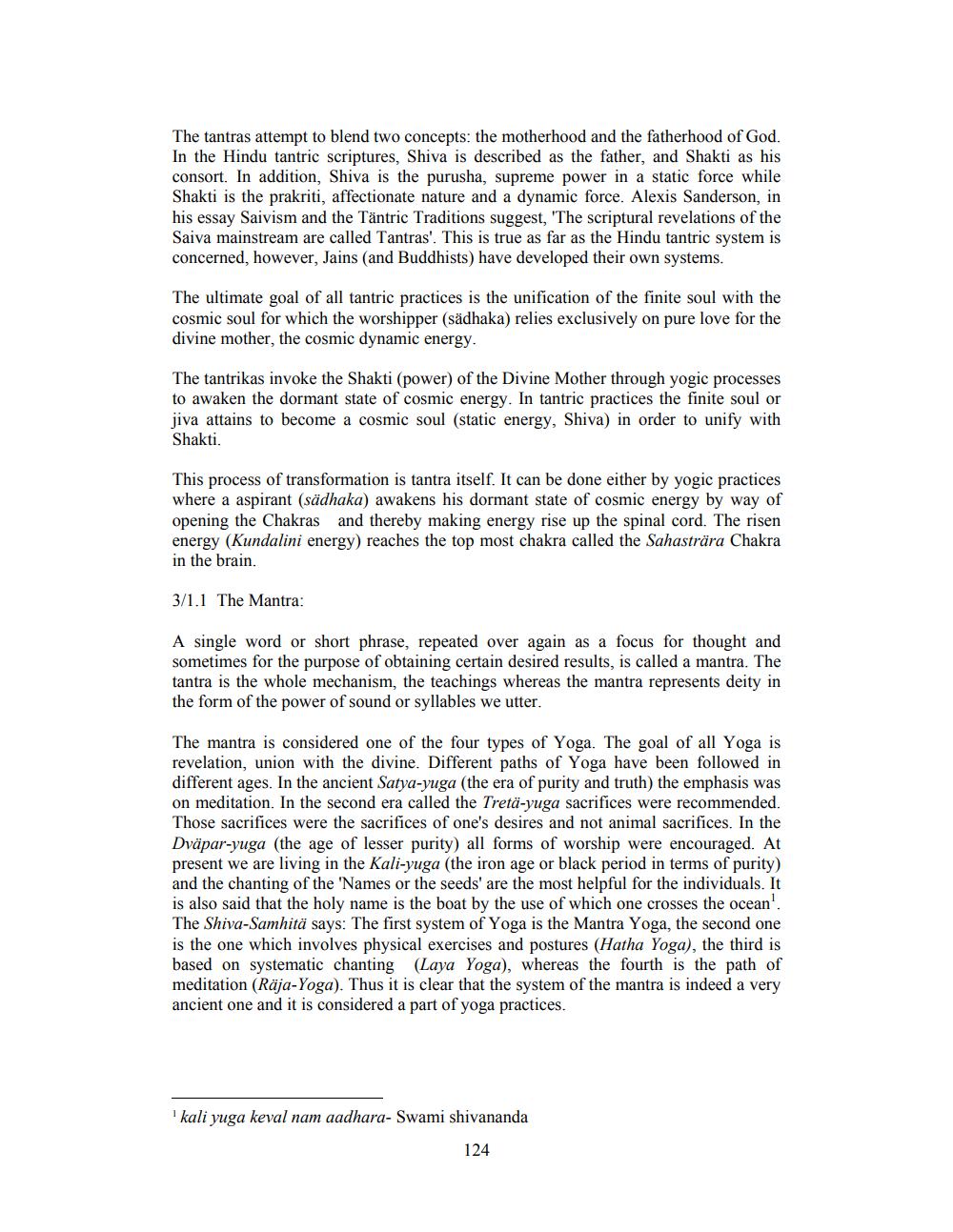________________
The tantras attempt to blend two concepts: the motherhood and the fatherhood of God. In the Hindu tantric scriptures, Shiva is described as the father, and Shakti as his consort. In addition, Shiva is the purusha, supreme power in a static force while Shakti is the prakriti, affectionate nature and a dynamic force. Alexis Sanderson, in his essay Saivism and the Tantric Traditions suggest, 'The scriptural revelations of the Saiva mainstream are called Tantras'. This is true as far as the Hindu tantric system is concerned, however, Jains (and Buddhists) have developed their own systems.
The ultimate goal of all tantric practices is the unification of the finite soul with the cosmic soul for which the worshipper (sädhaka) relies exclusively on pure love for the divine mother, the cosmic dynamic energy.
The tantrikas invoke the Shakti (power) of the Divine Mother through yogic processes to awaken the dormant state of cosmic energy. In tantric practices the finite soul or jiva attains to become a cosmic soul (static energy, Shiva) in order to unify with Shakti.
This process of transformation is tantra itself. It can be done either by yogic practices where a aspirant (sädhaka) awakens his dormant state of cosmic energy by way of opening the Chakras and thereby making energy rise up the spinal cord. The risen energy (Kundalini energy) reaches the top most chakra called the Sahasträra Chakra in the brain.
3/1.1 The Mantra:
A single word or short phrase, repeated over again as a focus for thought and sometimes for the purpose of obtaining certain desired results, is called a mantra. The tantra is the whole mechanism, the teachings whereas the mantra represents deity in the form of the power of sound or syllables we utter.
The mantra is considered one of the four types of Yoga. The goal of all Yoga is revelation, union with the divine. Different paths of Yoga have been followed in different ages. In the ancient Satya-yuga (the era of purity and truth) the emphasis was on meditation. In the second era called the Tretä-yuga sacrifices were recommended. Those sacrifices were the sacrifices of one's desires and not animal sacrifices. In the Dväpar-yuga (the age of lesser purity) all forms of worship were encouraged. At present we are living in the Kali-yuga (the iron age or black period in terms of purity) and the chanting of the 'Names or the seeds' are the most helpful for the individuals. It is also said that the holy name is the boat by the use of which one crosses the ocean1. The Shiva-Samhitä says: The first system of Yoga is the Mantra Yoga, the second one is the one which involves physical exercises and postures (Hatha Yoga), the third is based on systematic chanting (Laya Yoga), whereas the fourth is the path of meditation (Räja-Yoga). Thus it is clear that the system of the mantra is indeed a very ancient one and it is considered a part of yoga practices.
1kali yuga keval nam aadhara- Swami shivananda
124




